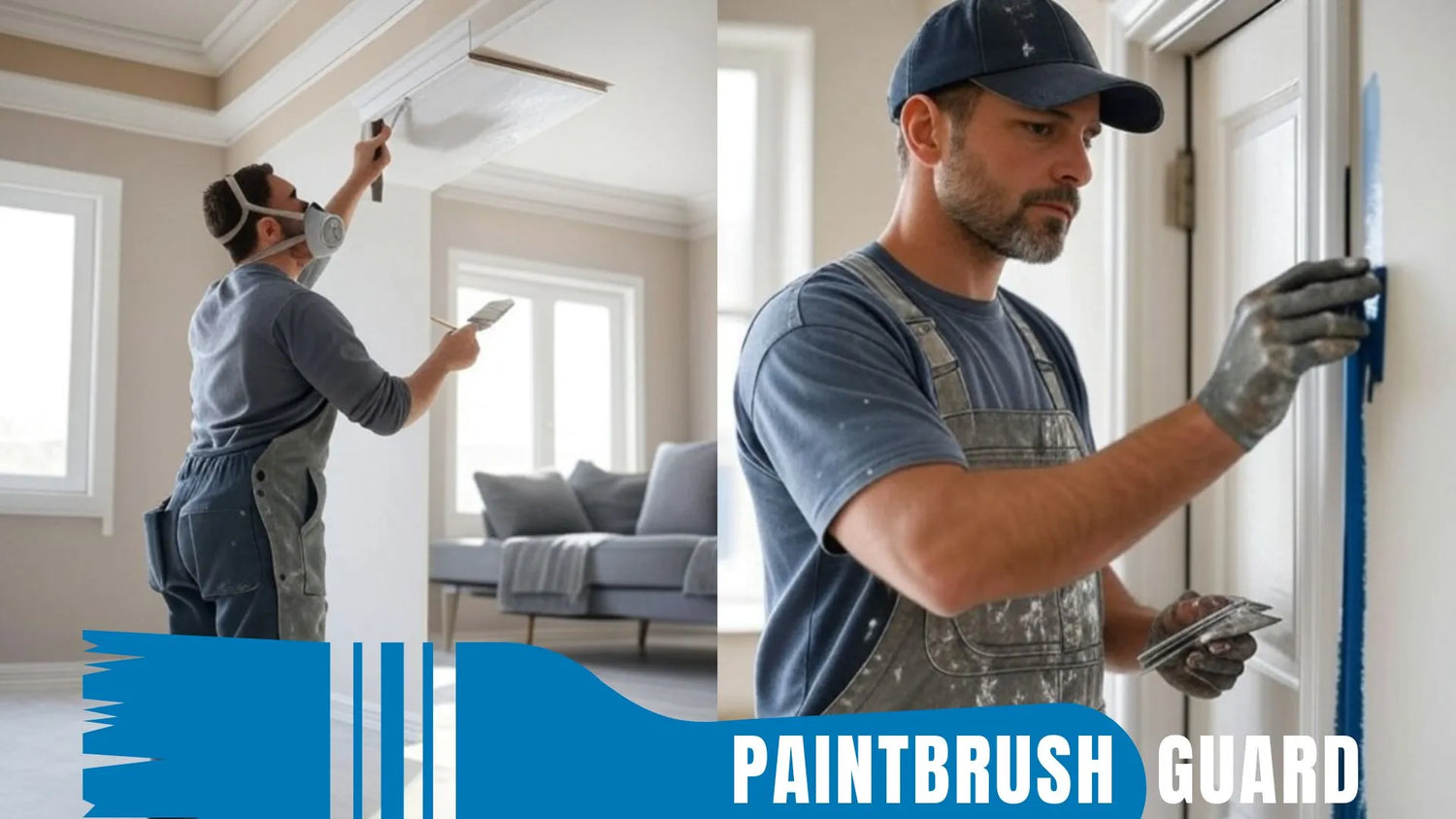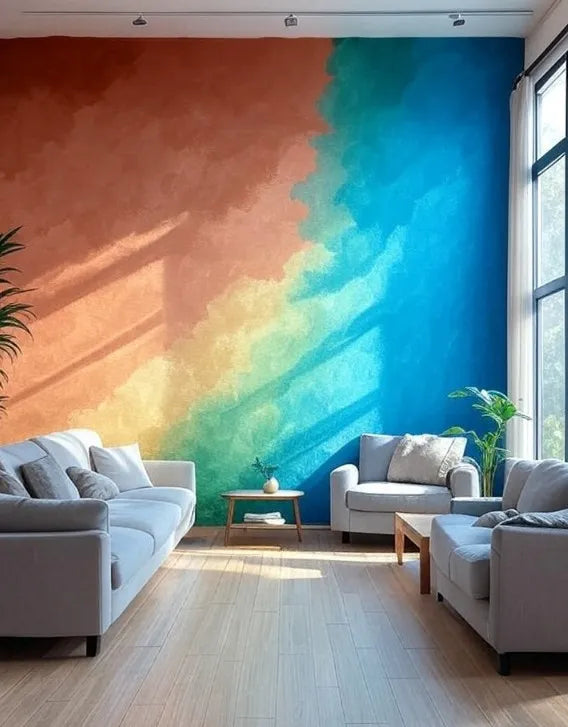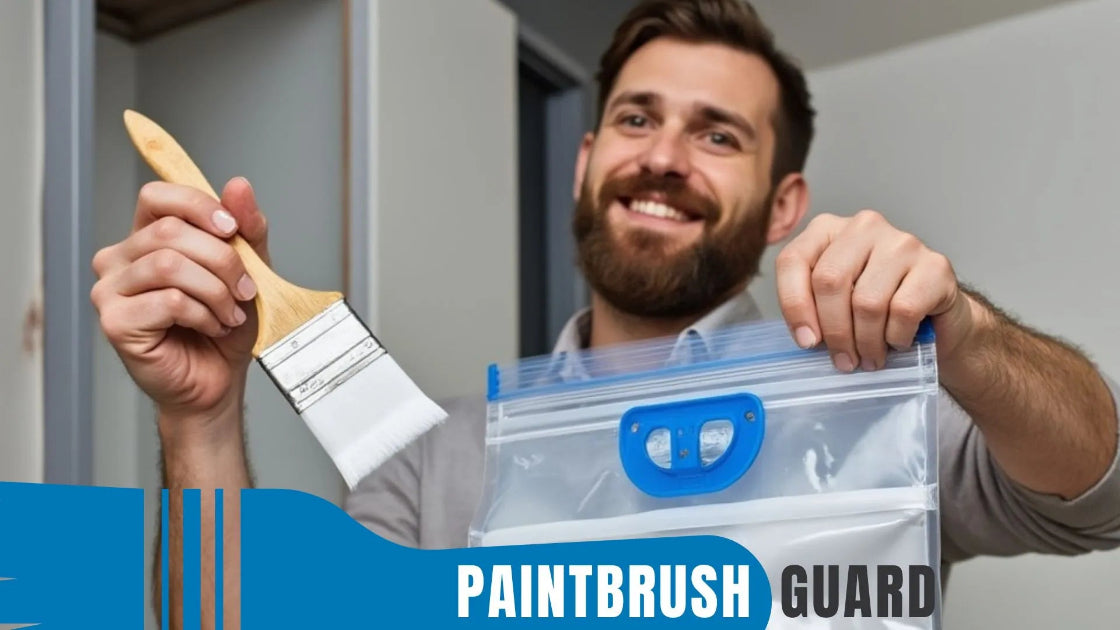
How to Prep Walls for Painting: 5 Beginner Steps & Tips
|
Time to read 6 min
|
Time to read 6 min
Taking the time to prep walls for painting is essential for achieving a high-quality finish. Proper preparation prevents common issues like peeling paint, uneven coverage, or visible imperfections that can ruin your hard work.
For beginners, the process might feel overwhelming, but these simple steps make it manageable. By following them, you’ll create a clean, even surface that allows your chosen paint color to shine, giving your space a polished, professional look.
Painting interior walls? Our 10-step beginner guide with product recommendations ensures a flawless, professional finish for any room.
These five beginner-friendly steps will help you prep walls for painting, ensuring a smooth process and a stunning outcome.
Before you start to prep walls for painting, set up your workspace to make the process easier and protect your belongings.
Move furniture, decor, and wall hangings out of the room or to the center, covering them with plastic sheeting or drop cloths. Spread heavy-duty drop cloths over the floor to catch drips and debris.
Remove outlet covers, switch plates, and hardware like curtain rods. Use painter’s tape to cover trim, windows, and doorframes for clean lines. This initial step to prep walls for painting keeps your space tidy and prevents accidental paint splatters on surfaces you want to keep clean.
Discover how house paint colors influence mood & get expert tips on choosing the best colors for every room to create a vibrant, harmonious home environment.
Dirt, dust, and grease can interfere with paint adhesion, so cleaning is a critical step to prep walls for painting. Start by dusting the walls with a dry cloth or a vacuum with a brush attachment to remove cobwebs and loose debris. Then, wash the walls with a mild detergent mixed with water, using a sponge or soft cloth.
In kitchens or high-traffic areas, tackle grease spots with a degreaser. Rinse the walls with clean water to remove any soap residue and let them dry completely. Thorough cleaning ensures better paint adhesion and a smoother finish when you prep walls for painting.
To achieve a professional look, you need to prep walls for painting by fixing any cracks, holes, or dents. Inspect your walls for issues like nail holes, cracks, or peeling paint.
For small imperfections, apply spackling paste with a putty knife, smoothing it evenly. For larger holes, use a patching compound or drywall patch kit. Once the compound dries, typically in one to two hours, sand the area with fine-grit sandpaper until smooth.
Wipe away dust with a damp cloth. Addressing these imperfections is crucial to prep walls for painting, as it creates a seamless surface for your paint to glide over.
Sanding helps create an even surface, especially if your walls have a glossy finish or minor texture. Use fine-grit sandpaper or a sanding sponge to lightly sand the walls, focusing on glossy areas to improve paint adhesion.
If your walls are already smooth and matte, a quick sanding may be enough to remove minor bumps. After sanding, wipe the walls with a damp cloth or tack cloth to remove dust. This step to prep walls for painting ensures a smooth, professional-quality surface that enhances the final result.
Priming is a step many beginners skip, but it’s vital to prep walls for painting. Primer seals the wall, covers stains, and ensures better paint adhesion and color accuracy.
Choose a high-quality primer suited for your wall type, whether it’s standard drywall, bare wood, or a stained surface.
Apply primer with a roller for large areas and a brush for edges, ensuring even coverage. Let the primer dry completely, checking the can for drying times, which typically range from one to four hours.
Priming completes the process to prep walls for painting, creating a uniform base that makes your topcoat look vibrant and even.
Beginners often encounter pitfalls that can compromise their paint job. One mistake is skipping the cleaning step, which leads to poor paint adhesion and a patchy finish. Another is ignoring repairs, as unfixed holes or cracks will show through the paint.
Not using primer can result in uneven colors and the need for extra paint coats. Rushing drying times for patches or primer can also cause streaks or peeling. Avoiding these errors when you prep walls for painting ensures a smoother process and a better outcome.
Expert tips on how to paint bathrooms and kitchens: Choose moisture resistant paint, master grease removal and optimize ventilation professional results.
To make the process to prep walls for painting easier, invest in quality tools like a sturdy putty knife, fine-grit sandpaper, and reliable painter’s tape for crisp lines.
Work in a well-ventilated area by opening windows or using a fan to reduce dust and fumes. Budget around $10 to $30 for supplies like spackle, primer, and drop cloths, and look for sales at hardware stores to save money.
Take your time with each step to avoid rushing, as thorough preparation is key to a professional-looking paint job.
Transform your space and learn how to paint over wallpaper or textured walls without stripping. Step-by-step tips, essential tools, common pitfalls to avoid.
Properly prepping walls for painting is the secret to a stunning, long-lasting finish, even for DIY beginners. By clearing the room, cleaning thoroughly, repairing imperfections, sanding, and priming, you’ll create a perfect canvas for your paint.
These five steps to prep walls for painting are simple yet effective, ensuring your home improvement project looks polished and professional. Grab your supplies, follow these steps, and get ready to transform your space with confidence.
Cleaning walls removes dust, grease, and debris that can prevent paint adhesion, ensuring a smooth finish for a bedroom refresh. Using a mild detergent and sponge creates a clean surface, reducing the risk of patchiness and ensuring a professional look without needing extra coats.
Filling cracks and holes with spackling paste for a living room accent wall creates a seamless surface, preventing visible flaws under paint. Sanding repairs smooth ensures even coverage, saving time on touch-ups and delivering a polished, high-quality finish for beginners.
Applying a primer seals drywall or stained surfaces during a hallway repaint, enhancing paint adhesion and color vibrancy. This prevents uneven tones, reduces the need for multiple coats, and ensures a durable, professional result, making it a critical step for DIY painters.
The Paintbrush Guard’s vacuum-seal technology keeps brushes wet during breaks for a bathroom wall project, saving 15 minutes per session by eliminating cleanup. This maintains bristle softness, reduces water and solvent waste, and streamlines prep for an eco-friendly, efficient painting process.
Skipping cleaning or rushing primer drying for a dining room repaint can lead to peeling or uneven paint. Taking time to tape edges properly and ensuring a dust-free surface prevents rework, ensuring a smooth, professional finish with minimal effort and waste.

Learn about eco-friendly painting, tips and tutorials on house interior and exterior surfaces, so you can get started with your project without any surprices during or after your painting.

Learn how interior house paint colors influence mood with expert tips on room preference so you can pick the best colors for a harmonious home environment.
We focus on the most popular shades for each interior colors, so you don't miss no matter what color you pick.

Learn how this innovative tool allows you to store paintbrushes without the need for immediate cleaning, offering significant advantages in time savings, water conservation, reduced chemical pollution, and lower costs for supplies.



